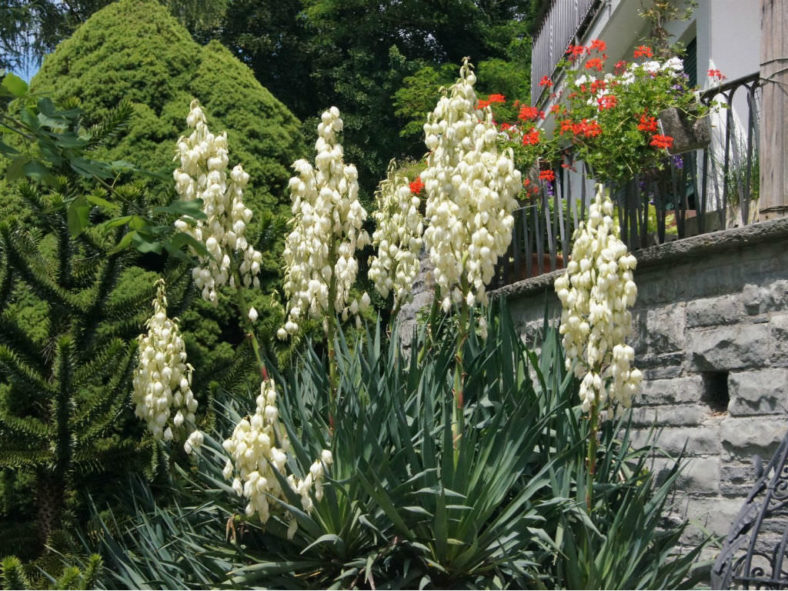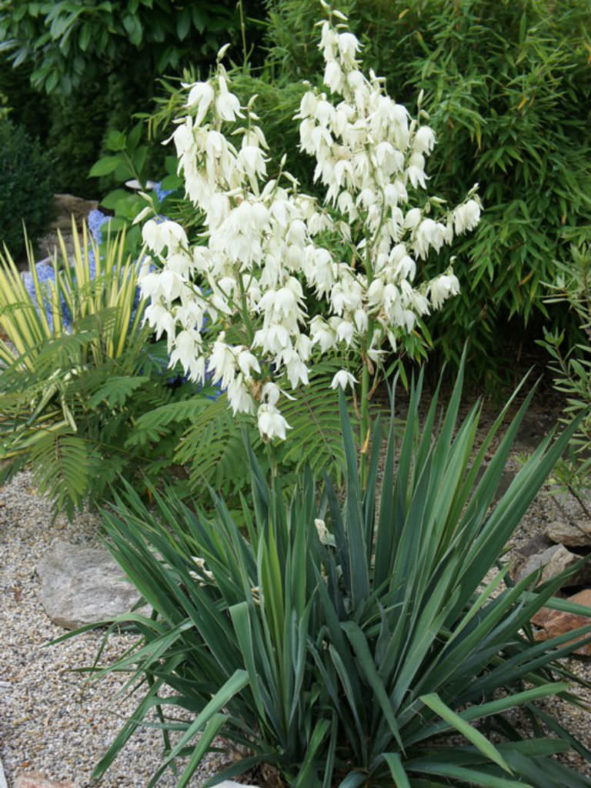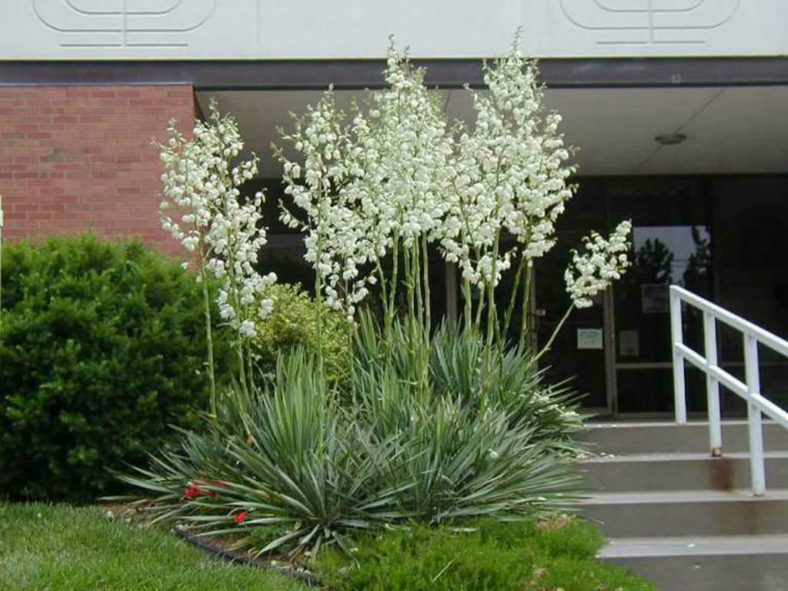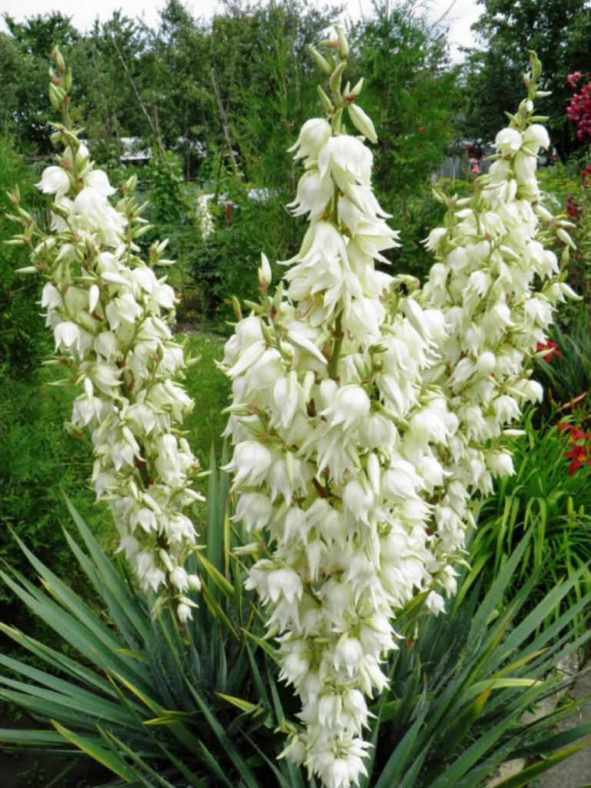Scientific Name
Yucca filamentosa L.
Common Name(s)
Adam's Needle, Bear Grass, Common Yucca, Needle Palm, Silk Grass, Spanish Bayonet, Spoon-leaf Yucca
Synonym(s)
Yucca filamentosa var. filamentosa
Scientific Classification
Family: Asparagaceae
Subfamily: Agavoideae
Genus: Yucca
Origin
Yucca filamentosa is native to beaches, dunes, and fields from southeast Virginia south to Florida and as far west as south and southeast Texas.
Description
Yucca filamentosa is an ornamental, virtually stemless shrub with a basal rosette of green, rigid, sword-shaped, and spine-tipped leaves. It can grow up to 10 feet (3 m) tall and form a small colony over time from basal offsets. The white, thready filaments along the leaf margins readily distinguish this species from other species. The leaves can measure up to 12 inches (30 cm) long and 1.6 inches (4 cm) wide.
In late spring, a tall flowering stalk rises from the center of each rosette, bearing long terminal panicles of nodding, bell-shaped, creamy-white flowers. The flower stalk can grow up to 12 feet (3.6 m) tall. The fruits are elliptical dehiscent capsules.

Hardiness
USDA hardiness zones 4a to 10b: from −30 °F (−34.4 °C) to 40 °F (+4.4 °C).
How to Grow and Care
Under the right conditions, Yuccas are not difficult plants to grow. They tend to thrive on a bit of neglect rather than too much attention. They are especially easy to overwater, and soggy stems are a sign of too much water. The best conditions for Yuccas include a sunny corner with relatively low humidity. They are not prone to many pests, although scale can be an issue. Over time, plants will typically lose their lower leaves (in nature, they droop, forming a skirt around the trunk), giving the plant a pleasant "tree-like" appearance.
Yuccas are relatively slow-growing plants that should only need to be repotted every other year. They do well, slightly pot-bound, as long as they don't become heavy enough to tip over their containers. Repotting larger plants can be difficult, so they can be refreshed with new potting soil by digging out the top 2 inches (5 cm) of the container and adding new soil. During typical repotting, remove the plant from its container and go up one container size. Always use fresh potting soil.
Learn more at How to Grow and Care for Yucca.
Links
- Back to genus Yucca
- Succupedia: Browse succulents by Scientific Name, Common Name, Genus, Family, USDA Hardiness Zone, Origin, or cacti by Genus
Photo Gallery
Click on a photo to see a larger version.


